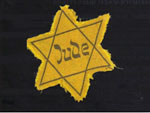At a Glance
Topics
Features
Duration
Grade(s)
Lesson Format
Download
Organizing History Through Images
Students organize photographs from the U.S. Holocaust Museum both chronologically and conceptually in order to construct a narrative of the Holocaust.
Review

In this lesson, students organize photographs in order to tell the story of the Holocaust and construct an evidentiary narrative that makes sense to them. The lesson does not include any “correct” ordering or organization of the photographs and instead encourages students to experiment with organizing them both chronologically and thematically.
This lesson also guides students through the process of revising conclusions based on the discovery of additional historical evidence. Students are given a definition of the Holocaust and asked to consider or revise the definition with each new photograph in order to illustrate how historical narratives change depending on the available evidence.
Reading and analyzing primary texts can often be a daunting task for students who struggle with basic literacy skills. However, because this lesson presents historical data in the form of photographs, it is an excellent way to provide all students with access to the historical process, and to support historical thinking with struggling readers or English language learners.
For more advanced or older students, the supplementary activity asks students to read and incorporate brief testimonies of survivors into their definition of the Holocaust.
Notes
The photographs that accompany this lesson are available here.
| Field | Criteria | Comments | ||
|---|---|---|---|---|
| Historical Content | Is historically accurate? | Yes |
||
| Includes historical background? | Yes |
|||
| Requires students to read and write? | Yes |
|||
| Analytic Thinking | Requires students to analyze or construct interpretations using evidence? | Yes |
||
| Requires close reading and attention to source information? | Yes |
|||
| Scaffolding | Is appropriate for stated audience? | Yes |
||
| Includes materials and strategies for scaffolding and supporting student thinking? | Yes |
|||
| Lesson Structure | Includes assessment criteria and strategies that focus on historical understanding? | Yes |
||
| Defines clear learning goals and progresses logically? | Yes |
|||
| Includes clear directions and is realistic in normal classroom settings? | Yes |
|||